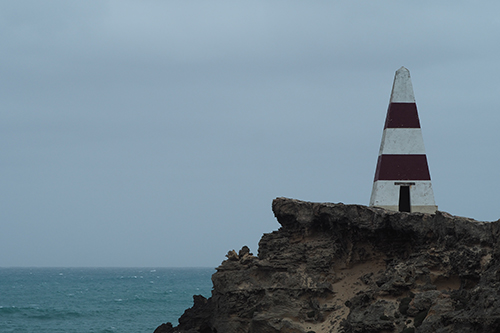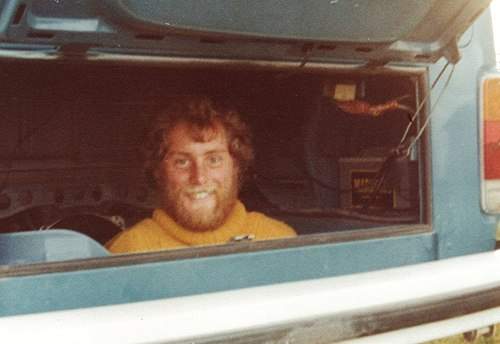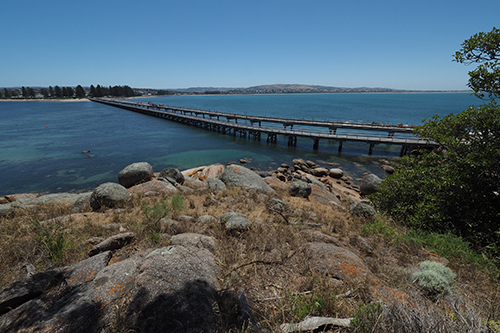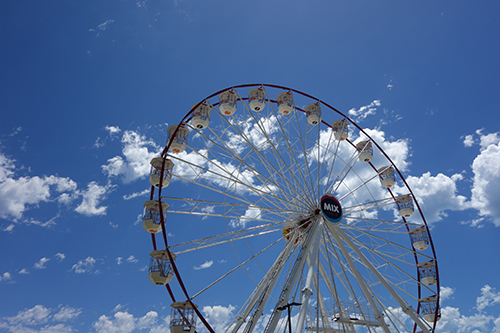November 22, 2021. Melbourne to Warrnambool.
Yet again we were heading to Adelaide in an attempt to redeem our paid for accommodation there.
This was the third time, so hopefully the old adage: ‘Third time lucky’ would be right.
In Warrnambool we had dinner at the Whalers Hotel, which was the only meal we had out, on our last trip, before lockdown forced us to eat in the room.
That trip we wanted to go to the Warrnambool Hotel, but we missed out as it was full. This night we missed out again, as it was a Monday and they weren’t open.
Would we ever get there?
November 23, 2021. Warrnambool.
South Australia was opening up after months of closed borders. However there was a plethora of online paperwork and then a COVID test to gain entry.
In the morning we went to get our required Covid tests. The public testing station was at capacity for the day and we were directed to go around the corner to a private laboratory. This was only testing for asymptomatic people or those wanting to travel interstate.
There was little wait time and we were in and out in about 20 minutes and, like the public one, it was free.
This trip we weren’t limited to a 5 kilometre travel zone, so decided to visit Tower Hill, which is 15 kilometres out of Warrnambool.
Tower Hill is an inactive volcano with a 3 kilometre wide and 80 metre deep crater. The last eruption was believed to have been about 35,000 years ago. Aboriginal artefacts have been excavated from the volcanic ash, indicating that the area was settled by indigenous people at the time.
There are some interesting walks around the area but the signage is very poor. We did parts of the ‘Last Volcano Walk’ and the ‘Lava Tongue Boardwalk’ and then drove to the caldera viewing point.
This scene was made famous in 1855 by Eugene von Guerard, one of the foremost landscape artists of the Colonial era.
That evening rain came pelting down, just as we were about to head out to dinner. Would we ever get to the Hotel Warrnambool?
Finally we did make it and remained relatively dry.
November 24, 2021. Warrnambool.
Continuing our plan to travel further than 5 kilometres from our motel, we made a side trip to Port Fairy, which is about 30 kilometres away.
Port Fairy sits at the entrance of the The Moyne River and is a town of historical significance. It was originally established as a whaling station in 1835 by John Griffiths and in 1843 it was developed as a town by James Atkinson. Atkinson drained the swamps, subdivided and leased the land and built the harbour.
There are many significant historic buildings in Port Fairy. Attached to each one is a blue plaque with their original names, uses and date of build.
I spent most of our time in the town photographing these wonderful of examples of colonial architecture.
We then had a walk around the Moyne River entrance and Battery Hill.
On the way back to Warrnambool we stopped at Hopkins Falls. At 90 metres wide and 11 meters high, this one of the widest waterfalls in Australia.
Thea got her COVID ‘all clear’ Text at 11:30am, however I had heard nothing by 4pm, so we returned to the testing station in Warrnambool to try and find out why.
They suggested that I phone their notification centre and after 57 minutes on hold I finally got through.
Fortunately I was also negative.
That night we went to the Whalers Hotel again for a drink, then had dinner at Images, a restaurant where we got takeaway from on our last trip. The takeaway had been excellent, so we decided to try the sit down menu – it was also very good.
November 25, 2021. Warrnambool to Robe SA.
After three nights in Warrnambool we were heading to South Australia, which wasn’t an easy place to get into.
Apart from all the apps and online paperwork, there was a border check at Nelson, just outside Mount Gambia. Things went relatively smoothly there, even though one of the App passwords still had not been texted to us.
The chap at the border check wasn’t surprised – I don’t think they have that part of the process working yet.
As I said to many people on our return to Melbourne: It was easier getting into East Berlin in 1972 than it was getting into South Australia in 2021.
South Australia has a maximum speed limit of 110 kph. on most country roads. It works where the roads can sustain that speed but it’s a bit hairy when they can’t.
We stopped at Mount Gambia for lunch and then visited the Blue Lake, which isn’t far from the city.
The Blue Lake is a large monomictic crater lake located in a dormant volcano. There are conflicting dates to when the volcano last erupted, from 4,300 to 28,000 years ago.
If the most recent date is to be believed, this would make it the most recent volcanic eruption on the Australian mainland.
The lake gets its name from the fact that it turns a vibrant cobalt blue during the summer months.
The Blue Lake supplies Mount Gambia with drinking water and there is a very attractive pumping station on the rim that was built in 1900.
After the Blue Lake we travelled a short distance to see the Valley Lake, another crater lake similar to the Blue Lake and one of the lakes that is part of the Mount Gambia maar.
We arrived at Robe in the late afternoon.
It was very quiet, compared to Warrnambool.
November 26, 2021. Robe SA.
In the morning the temperature had dropped, the sky was grey and there was a gale blowing, which apparently isn’t uncommon for Robe.
Breakfast was at the Robe Store, which is in the Robe Industrial Estate. We went there as they featured Mahalia Coffee, which is locally roasted.
It was a very funky store with an eclectic range of gifts and a strange, old fashioned, style of interior decor.
Robe has two very contrasting districts.
There’s the main town area, with its colonial building and traditional shops, pubs, and restaurants. Then on the outskirts of the town is the industrial estate, with the Robe Craft Brewery, Robe Store and Transmutation.
Transmutation is a plastic recycling workshop and retail outlet, with a deep concern for the environment.
It fits in perfectly to the industrial estate’s alternative approach.
Robe was named after the fourth Governor of South Australia, Major Fredrick Robe, who chose the site as a port in 1845.
Around 1857 over 16,000 Chinese immigrates landed in Robe. They were heading overland to the Victorian goldfields, as the Victorian Government had introduces a £10 landing tax to discourage Chinese migrants.
This tax was more than they had paid for their voyage to Australia.
We did the historic walk around Robe to the Obelisk, covering such sites at the Pai Fang Welcoming Gate, the Chinese Memorial and another to Captain Mathew Flinders and Sub Lieutenant Nicolas Baudin and the Robe Customs House, that operated between 1863 and 1888.
The Obelisk is the symbol of Robe.
It can be seen from many parts of the area surrounding the town and its image adorns all sorts of businesses and tourist attractions.
The Robe Obelisk was built in 1855 and was used as a landmark to guide ships entering Guichen Bay. It was also used to store rocket fired lifesaving equipment for stricken ships.
It is 12 metres tall and can be seen for 20 kilometres out at sea.
Near the obelisk are the ruins to the old Robe Gaol. There isn’t much to see as everything is in ruins.
Late in the afternoon we visited the Robe Town Brewery for a taste of craft beer.
Like all good brew pubs it was in a warehouse, so dogs were allowed and being a Friday night, there was live music and lots of families.
Dinner that night was at the Caledonian Inn, which we were told, was the best of the local pubs.
It was ok.
November 27, 2021. Robe to Wellington SA.
In the morning the sun was out but the wind still strong, so we decided to revisit a couple of the places we had seen the day before, hoping that the light was better for our snaps.
On the way to Wellington we made a side trip to Kingston SE.
This was where we spent a few days after the engine of our VW Campervan blew up on November 2nd, 1976.
So it was with a little trepidation that I agreed to make the return trip to Kingston SE.
When our VW blew up on the Coorong, a stretch of windblown coast that starts at the mouth of the Murray and finishes at Kingston SE, we had to be towed into Kingston SE. There we waited to find out that the engine was unrepairable and would need to be replaced.
While we waited for the bad news we stayed at the local caravan park and slept in the engineless van.
This was both strange and uncomfortable.
The engine of the VW was in the back and without it the van stuck up into the air, causing us to slide out of bed during the night on a number of occasions.
The new engine had to come from Adelaide and wouldn’t be available for at least a week.
Due to work commitments we returned to Melbourne by public transport, then came back to Kingston SE a week later to retrieve the van.
As the engine was new and needed running in, it was rather a slow drive back to Melbourne.
All in all it wasn’t an enjoyable time in Kingston SE.
It was a longish drive to Wellington, through the Coorong and I was rather glad when we had left the area without any further drama.
As we were too early to check into our hotel in Wellington we stopped at Wellington East and visited the Pangarinda Botanical Gardens.
These gardens are designed to preserve and propagate Australia’s threatened flora, especially from dryer regions.
It was a sunny afternoon and the gardens were a blaze of colour.
We had to get a punt across the Murray River to our hotel, the Wellington, which is right on the river bank.
The Wellington Punt was established in 1839 and was the first and most important Murray River crossing at the time. It was a vital link between South Australia and Victoria and ultimately the Victorian gold fields.
These days the ferry is free and runs 24/7, so throughout the night it was making the 12 minute crossing.
Dinner was at ‘The Welly’ as there was nowhere else to go, unless we wanted to get the punt back over the river.
November 28, 2021. Wellington to Victor Harbor SA.
As the Welly didn’t serve breakfast we were on the punt and back over the river, to Wellington East, for breakfast at ‘The Hall’.
This seemed to be the trendy place to go for the locals and tourists.
The building was originally a church, built by a local indigenous man, who was prohibited from attending the ‘White’ congregation.
Not very Christian of them.
After breakfast, which was fantastic, it was a bit of a drive and then another punt, this one at Talem Bend, to get us on the road to Victor Harbor.
Then a drive through the Langhorne Creek wine region to Milang.
There we took The Milang Flyer, for the shortest rail trip ever – 300 metres and that was there and back. The train driver was young and very enthusiastic and we got all the info about the train line and the engine.
There is a museum associated with the train and everything is run by volunteers and it’s free.
Afternoon coffee was at the mouth of the Murray at the Coorong Cafe. It was a takeaway van but they did accept our KeepCups and the coffee wasn’t that bad.
The Murray’s mouth is constantly being dredged, as there is a massive build up of silt. This is funded jointly by the South Australian, New South Wales and Victorian Governments.
Once we reached Victor Harbor we had quick walk around town, as it isn’t very big. However one of the most impressive businesses appeared to be the Tattoo Parlour.
And it’s not surprising, considering the number of locals with ‘ink’.
Our accommodation was at the Hotel Victor, where our Covid screening was the most intense we have encountered so far.
As an aside, the spelling of Victor Harbor, with the lack of a ‘u’ is not an American influence but a return to archaic English.
November 29, 2021. Victor Harbor SA.
Breakfast was a short walk down the beach to Qahwa, a cafe in a pavilion, between the tennis and beach volleyball courts.
There was no one playing either sport but the young kids were enjoying the sand on the volleyball side.
Granite Island is one of the main attractions of Victor Harbor, as well as the horse drawn tram that ferries people to it.
However the tram wasn’t running, as there is a new pier under construction and there was the associated kaleidoscope of ‘high-vis’ working on the job.
We did an anti clockwise walk around Granite Island with amazing rock formations and wildflowers along the route.
After circumnavigating the island we retuned to walk back over the bridge, there I found a mobile phone just sitting on a rock and looking very lonely.
I took it to the Causeway Cafe, that’s at the start of the bridge, and left it with the the staff there.
The teamwork involved in getting it back to its owner, who was a student, was amazing.
When I found the phone I mentioned to one of the ‘hi-vis’ there that I had it and would take it to the cafe. A teacher came looking for it, spoke to the worker and then phoned the lost phone’s number. A cafe staff member answered the phone and told the teacher that It was there.
Both the student of the lost phone and their parents would have been very relieved that night – that’s if the student ever fessed up to loosing it.
In the afternoon we drove to The Bluff, Fleurieu Peninsula and then back to Victor Harbor. It was a relaxing drive with iconic Australian rural views along the route.
That night we dined in at the Hotel Victor.
It had been a long day and we didn’t feel like venturing too far from our room.
November 30, 2021. Victor Harbor to Adelaide SA.
Breakfast was back at Qahwa, as the temperature started to rise.
It seems to be a popular spot, with many of the same people having breakfast as were there the previous morning.
It was a relatively short drive to Adelaide, however we did make a diversion to Hahndorf.
This iconic town, with its strong German influence, was setting up for Christmas and the evidence of the European celebrations could be seen everywhere.
We checked into the Frome Street Apartments in the middle of the afternoon.
Using the credit from an earlier trip, that was abandoned due to a lockdown, was the reason for coming to South Australia in the first place.
It was great to be able to finally get a return for the money spent.
It was very hot in Adelaide when we arrived, with the temperature up around 39°C.
We had a brief walk along Rundle Mall before buying some provisions for breakfast.
We figured that the money we saved on getting our own breakfasts for the next three mornings, might go towards paying for the parking, which was in a multi-story carpark just down the road.
After trying to get into a number of restaurants that were booked out (well it was a Tuesday and most places were closed) we settled on ‘The Original Coopers Ale house’. This was situated in The Earl Aberdeen Hotel.
Originally built in 1879, it was a part of a network of Adelaide’s corner pubs. An addition was made in 1924 and in 1987 it was refurbished and officially opened by Dame Edna Everage, AKA Barry Humphries, as the ‘Coopers Alehouse’ the home to South Australia’s last remaining major brewery.
December 1, 2021. Adelaide SA.
It wasn’t a good start to the day when we discovered that the hot tap in the shower was caput.
After a few phone calls a plumber turned up and changed a washer.
So it was a late morning shower and a late start to the day.
As we self catered for breakfast we weren’t forced to go onto the streets ‘unwashed’
The temperatures were high again as we went for coffee at Roxie’s Garden Cafe. It was a pleasant environment but the coffee was very disappointing, even after we gave specific instructions on how we wanted it.
We caught the Tram to Glenelg, which is on the beach and if you have a Seniors Card, it’s a free ride.
Another benefit of getting old.
At the beach it was much cooler and we enjoyed a walk around the area and also along the pier.
The vast majority of people in the water and on the sand were school leavers and university students – all on holiday now.
On the pier there were lots of these young people, both boys and girls. These I divided into ‘jumpers’ and ‘non-jumpers’, as there was a group who just jumped off the pier and another lot that talked about it but never committed.
It was a coffee for me and lunch for Thea in Moseley Square at Cibo Espresso.
The coffee this time was excellent.
Then it was another free tram ride back into Adelaide.
There were parts of the track running in a fenced off area, here the tram went flat out.
It was the Glenelg ‘Bullet Train’
When you are on foot, waiting for traffic lights in Adelaide takes up half your journey.
This is a city for drivers, not pedestrians and the traffic light cycle takes forever as cars from all directions get right of way ahead of the poor old peds.
We walked, all be it slowly, to Soi 38 for Dinner.
This was a Thai restaurant with great food but there was a winging old fart at the table next to us who complained about everything.
He left well before us, greatly improving the atmosphere and the night’s experience.
December 2, 2021. Adelaide SA.
It was a better start to the day, with everything working.
The temperature was still warm but not as hot as the previous two days.
Morning coffee was at Cibo Espresso on Pirie Street. This was one in a group of cafes that we found at the beach in Glenelg.
Again the coffee was great.
We walked to the Himeji Japanese-style gardens, built to celebrate the Sister City relationship of Adelaide with the Japanese city of Himeji.
We then continued our tour through a number of Adelaide’s beautiful parks back into the city.
In King Rodney Park / Ityamai-Itpina we met a chap practicing Frisbee or Disc Golf. This, as the name suggests, uses frisbees, not golf clubs and ball to play a round.
The interesting thing was that he was practicing with a range of different frisbees. As he explained you choose the frisbee that best suits the ‘shot’ you want to make.
Much like choosing the right golf club I guess.
In walking through the parks we discovered that each one has an anglicised name as well as an indigenous one. This is a great way to recognise the original inhabitants of the area.
Lunch and coffee at The Rose East End. Then it was a short walk up the bottom end of Rundle Street. Here we discovered all the interesting places to eat in the old market area close to our apartment – pity we hadn’t known about this earlier.
We then walked down to and around the main train station and back to our apartment.
Late in the afternoon we did return to the old market area and had a quick drink before dinner.
At least we can now say, we didn’t miss it.
Dinner was at Nazz, a Persian restaurant we discovered on our first night, while walking to the pub.
The food was good and much more ‘fancy’ than we had experienced in Iran. Plus there was alcohol, which we never got on that trip.
December 3, 2021. Adelaide SA to Horsham Vic.
After breakfast in the room we went and picked up the car from the car park.
The cost was about equivalent to staying another night. We are certainly glad that we decided to save some money and self cater our breakfasts.
The joys of staying in the city.
The Frome Street Apartments were in a great location and walking distance from most of the attractions in Adelaide, apart from Glenelg Beach.
We had coffee on the road in Murray Bridge and then it was back on the road to Horsham, with a sightseeing stop to see the Coonalpyn Silos. These were built in 1965 and painted by Guido in 2017.
Then it was lunch and a coffee in the Morning Loaf Bakery in Bordertown.
It was a barn if a place where the staff were more interested in chatting among themselves, rather than serving their customers.
We then visited the Kaniva Silos for another photo opportunity. These were painted by David Lee Pereira in 2020 and pay tribute to the nearby Little Desert and its diverse flora and fauna.
We were staying at the Horsham Country City Motor Inn and had dinner at the nearby Exchange Hotel.
December 4, 2021. Horsham Vic. to Sorrento.
Breakfast was again in the room, as we wanted to give ourselves enough time to catch an early afternoon ferry from Queenscliff to Sorrento.
Our coffee stop was in Ararat.
The drive from Horsham to Queenscliff was a pleasant cross country event as the Subaru’s GPS, ‘Sue’ we call her, decided that this rather round-about route was the way to go.
We managed to arrive in time to get the 2pm boat, which was perfect, giving us enough time to shop in Sorrento for our weekend stay.
The trip was complete and it had been a case of ‘Third time lucky’




















